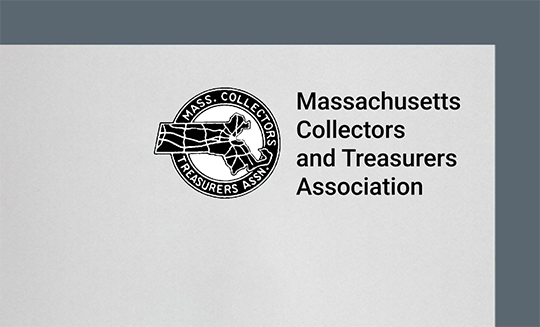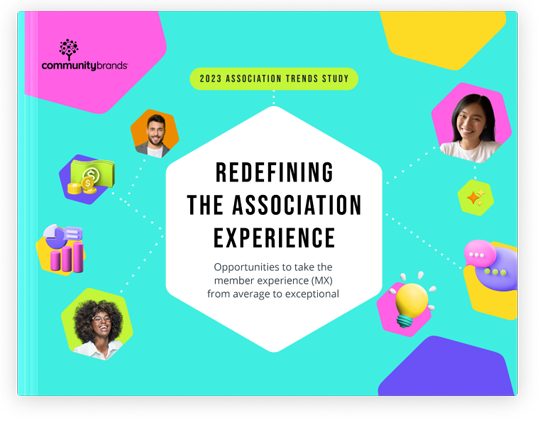Here’s how to develop a thought leadership program – even with a small staff.
By Christine Bergeron, Marketing Coordinator, Community Brands
When you think about your association’s goals for next year, you’re probably focused on membership acquisition and retention. But do you think about becoming a thought leader in your industry or profession?
Why become a thought leader in your field?
Thought leadership is about sharing ideas and insights that demonstrate you have expertise in a specific topic or field. Developing your organization as a thought leader in your industry can help you reach your goals in multiple ways:
Credibility – By expressing and promoting ideas as an expert, you’ll establish your organization as the trusted source of data, trends, and information in your industry. This, in turn, will help with your recruiting and retention efforts.
Networking – Working with subject matter experts in your field will give you the opportunity to develop relationships with influencers who can help you expand your reach to new audiences.
Member value – In the 2021 Association Trends Study by Community Brands, members of professional membership organizations who responded to the study’s survey rank “industry news and information” and “reputation/status of being a member” among the top most important membership benefits. The work that goes into becoming a thought leader in your industry helps you not only get industry news and information into your members’ and prospective members’ hands, but also elevate the standing of your organization in your field.
How to become a thought leader in your industry
Here are three effective ways to develop your organization as a thought leader in your field:
Develop a list of critical topics.
Start a list of some of the key news sources for your industry. These might include trade magazines, blogs, and podcasts. Then, set aside some time each week for you (or if you don’t have time, recruit a volunteer!) to review the latest topics covered in these sources. Keep a list of key topics and any links to articles and research about each topic. This will serve as your list of potential topics for news and information that you can write about, produce research on, and share with your members.
Identify subject matter experts (SMEs).
With a small staff, you don’t likely have the time to produce a bunch of thought leadership content by yourself. The good news is that you don’t have to.
Part of becoming a thought leader in your industry means bringing in some of the top minds in your field and curating content that helps your members keep up with trends and look to the future.
Here are some potential places to find the right SMEs for your organization:
- Your organization – Your association represents a specific trade or industry, so you likely have some of the expertise you need in-house. Or, your team might know someone who could write or speak about one or more of the topics on your list.
- Your association’s conferences – Look at surveys from past events for highly-rated speakers who might write or present new content.
- Your networks – Look within your own professional network by searching profiles on LinkedIn.
- Your competitors – Check out competing associations’ events and learning programs to see who’s speaking. Chances are, they’ve secured speakers who could create content for your organization as well.
- Industry webinars and podcasts – As you develop your list of topics, be on the lookout for well-regarded experts in your industry who are publishing their own content on related topics.
Create a thought leadership program.
Now it’s time to bring it all together into a thought leadership program. Here are a few simple steps:
Sketch out a calendar. Create a calendar for the next three to six months that includes:
- Topics
- The type of content you’d like to create (for example, articles, videos, or presentations)
- Which SME(s) you think would be the best match for each topic
- How you will share the content with your industry (for example, social media, your website, your online member community, your member newsletter, or one of your organization’s events)
Recruit speakers. Connect with the SMEs you’ve identified for each topic and ask if they will create the content you’ve outlined. Be prepared to provide them with:
- The target audience for the content
- A clear understanding of how the content will be shared
- Any specifications for the content (such as word count, video length and file type, or slide presentation template)
- An incentive for creating the content (such as a free registration for your next event, a discounted sponsorship in your online member community, or a free job listing on your online job board)
Evaluate and improve. As you continue to build your calendar and recruit speakers, set aside time to periodically evaluate how your thought leadership program is performing. Some approaches:
- Ask your SMEs for feedback to see if there’s any way you can improve the program.
- Watch for member comments in your online member community for insights into how the content is being received and what future topics you might cover. Join in the conversation to encourage additional feedback.
- Send a survey to your members to ask them what they think about specific content that you’ve provided as part of the program. You don’t have to tell them that it’s “thought leadership” content; just ask them what they think about specific content pieces.
Learn more.
Becoming a thought leader is just one way to help ensure you meet (and exceed) your goals for 2022 and beyond.







